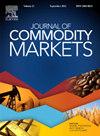评估税收制度对挪威大陆架未来海洋矿物项目投资激励的影响
IF 4.5
4区 经济学
Q1 BUSINESS, FINANCE
引用次数: 0
摘要
本研究以挪威大陆架为例,分析了两种主要不同的税收制度对海洋矿产项目潜在投资决策的影响。一个项目的勘探阶段被建模为一个多阶段的决策过程,通过该过程,公司获取信息以减少潜在矿床的地质不确定性。在不同的决策阶段,公司根据预期的经济可行性来决定是继续勘探还是放弃该矿床。一个动态估值框架被用来评估潜在的税收制度对公司决策的影响,包括勘探矿藏和开采矿藏所产生的项目价值。具体来说,标准的公司税制度和挪威石油税制度的变化进行了比较。研究结果表明,类似于挪威石油税制度的税收制度,但税率和退税率较低,对公司和国家都有好处。具体来说,与标准公司税制度相比,30%的总税率和25%的退税率的石油税制度为公司带来了最高的预期净现值,并降低了勘探风险。虽然将部分勘探风险从公司转移到国家,但石油税收制度的总税率为60%,退税率为55%,为国家创造了最高的净税收余额。可以设计一种权衡税制度,以分担矿产勘探和开采的固有风险,通过鼓励对该行业的投资,并确保国家获得可持续的经济利益,保持企业和监管决策者之间的平衡。本文章由计算机程序翻译,如有差异,请以英文原文为准。
Assessing the impact of tax systems on investment incentives in future marine minerals projects on the Norwegian Continental Shelf
This study analyzes the impact of two principally different tax systems on potential investment decision-making in marine minerals projects, using the Norwegian Continental Shelf as a case study. The exploration phase of a project is modeled as a multistage decision process through which a company acquires information to reduce geological uncertainties about potential deposits. At different decision gates, the company decides whether it is optimal to continue exploration or abandon the deposits based on their expected economic viability. A dynamic valuation framework is used to evaluate the impact of potential tax systems on corporate decision-making concerning both the exploration of deposits and the project value resulting from the extraction of deposits. Specifically, a standard corporate tax system and variations of the Norwegian petroleum tax system are compared.
The findings suggest that a tax system similar to the Norwegian petroleum tax system, but with lower tax and refund rates, offers advantages for both companies and the states. Specifically, the petroleum tax system with a 30% total tax rate and a 25% refund rate yields the highest expected net present value for the company and reduces its exploration risks compared to the standard corporate tax system. While shifting parts of the exploration risks from the company to the state, the petroleum tax system with a 60% total tax rate and a 55% refund rate generates the highest net tax balance for the state. A trade-off tax system could be designed to share the risks inherent in mineral exploration and extraction, maintaining a balance between corporate and regulatory decision-makers by encouraging investment in the sector and ensuring sustainable economic benefits to the state.
求助全文
通过发布文献求助,成功后即可免费获取论文全文。
去求助
来源期刊

Journal of Commodity Markets
Multiple-
CiteScore
5.70
自引率
2.40%
发文量
53
期刊介绍:
The purpose of the journal is also to stimulate international dialog among academics, industry participants, traders, investors, and policymakers with mutual interests in commodity markets. The mandate for the journal is to present ongoing work within commodity economics and finance. Topics can be related to financialization of commodity markets; pricing, hedging, and risk analysis of commodity derivatives; risk premia in commodity markets; real option analysis for commodity project investment and production; portfolio allocation including commodities; forecasting in commodity markets; corporate finance for commodity-exposed corporations; econometric/statistical analysis of commodity markets; organization of commodity markets; regulation of commodity markets; local and global commodity trading; and commodity supply chains. Commodity markets in this context are energy markets (including renewables), metal markets, mineral markets, agricultural markets, livestock and fish markets, markets for weather derivatives, emission markets, shipping markets, water, and related markets. This interdisciplinary and trans-disciplinary journal will cover all commodity markets and is thus relevant for a broad audience. Commodity markets are not only of academic interest but also highly relevant for many practitioners, including asset managers, industrial managers, investment bankers, risk managers, and also policymakers in governments, central banks, and supranational institutions.
 求助内容:
求助内容: 应助结果提醒方式:
应助结果提醒方式:


